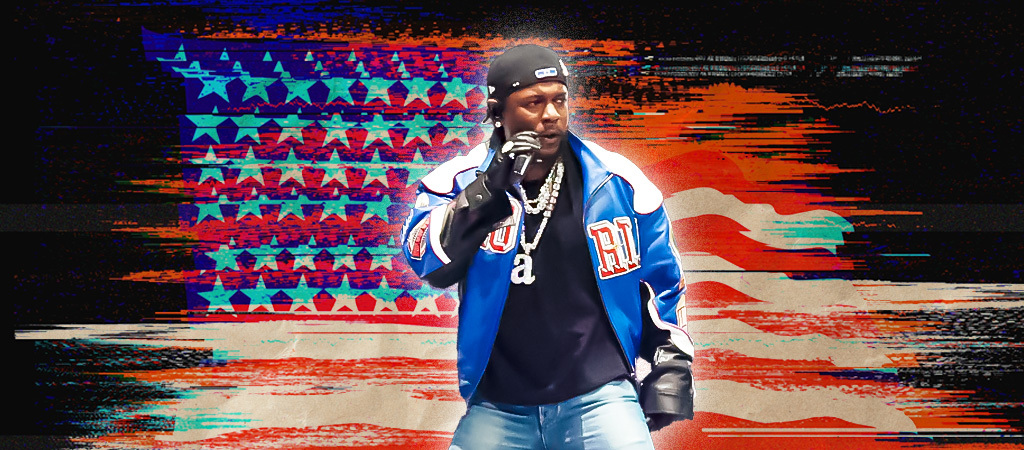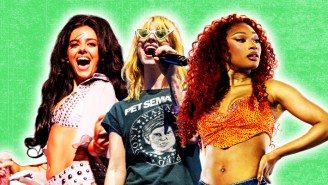11 minutes into Kendrick Lamar’s historic Super Bowl Halftime Show performance, about halfway through his trademark juggernaut of a diss song, “Not Like Us,” an unexpected guest appeared on millions of Americans’ television screens: international tennis superstar Serena Williams. Standing under a lamppost, the athlete-turned-mogul exhibited a joyous, familiar demonstration of the South Central Los Angeles-spawned, gang-related two-step, the crip walk.
For those deep into Kendrick Lamar lore, the appearance was fitting; like the Pulitzer Prize-winning rap poet, she hails from South Los Angeles’ Hub City, Compton (as does this writer), a point of pride for both and contention for their critics. Furthermore, her appearing during a song dissing one of hip-hop’s most recognizable figures made sense, as well; the two were occasionally linked romantically by tabloid writers throughout the early 2010s.
But there was a third dimension to Williams’ appearance, the one I think both Kendrick and Serena were most concerned with. Because, you see, on Super Bowl Sunday, February 9, 2025, “Not Like Us” ceased to be just about Drake. Just like Kendrick’s entire set, it was a challenge to America. It was a shot at an institution. It was a message. It was a reminder. You can’t cancel Black history. There are no diversity and inclusion initiatives you can kill that will erase this nation’s original sin. You are Not Like Us.
America wants to be like us. It tells itself stories of overcoming adversity. Like Drake, it lies about starting at the bottom. It takes credit for the innovations and creativity of those it oppresses. It demands entertainment of those whose humanity it refuses to acknowledge. I don’t have to provide examples. You know. Even as you fix your lips to deny it, even as you poise your thumbs to type out that “I don’t see color”… you know, in your heart of hearts, the truth.
Before it celebrated the accomplishments of a Black girl from the city of Compton (you call it an “inner-city,” despite it being a suburb, and you call it a ghetto, when it produces celebrities, cowboys, MBAs, and music writers), America spat on Serena Williams and her sister Venus. When Serena was on their way to becoming the winningest women’s tennis player of all time, America had nothing but criticism for her braids, her attire, her attitude, her drive, her figure, her business moves, her audacity to be Black in a sport that prides itself of its…”exclusivity.” That prides itself on telling Black folks “you are Not Like Us.”
America had so very much criticism for Serena when, upon winning the Wimbledon tournament in 2012, she danced a few steps of the C-walk in celebration. The first question she fielded upon leaving the court was, “All people know that the crip walk is not just a dance… I was wondering, do you have any regrets doing it in front of everyone?” As though celebrating your history, your heritage, your community, is something to be ashamed of. At the Super Bowl, Serena, alongside Kendrick, reversed the dynamic. They were the center of attention. They held the spotlight. And with it, a mirror. We are who love, who you want to be, who you emulate, who ask to create your biggest cultural moments. And you are Not. Like. Us.
The grin that slid across Kendrick’s face as he delivered the slick “Say Drake” that kicks off the most vicious stanzas of “Not Like Us” was his acknowledgement of the fact that so many in the audience would miss the point. They’d miss it, despite his incorporating Samuel L. Jackson as Uncle Sam to level exactly the same indictments that America has issued to Black artists for over 100 years in a knowing satire. They’d miss it, despite his dancers coming together to form the image of an American flag, draped in red, white, and blue, co-opting the jingoism that has taken over the NFL and its consumer base in the same way they’re so happy to co-opt the language and the look of hip-hop. How many country stars these days started out as “rappers” and still fill their songs with 808s and AAV?
Throughout the course of his set, Kendrick highlighted just how long his Cold War with Drake had chilled before the cold snap of 2024. Songs with layered, sublimated shots sizzled with the scintillating realization that he was always pointing the finger in indictment. But not just at Drake. Drake was just a useful puppet, an effigy. Drake was just the Great and Powerful Oz; Kendrick always wanted the man — or rather, the system — behind the curtain. The one that props up empty vessels like Drake, the one that chooses which version of hip-hop to prop up — the combative, fractious battle rap, the deleterious gangsta rap, the toxic drug rap — and slipped up, just this once, and let in the one that would stand on the field at the single most-watched television event of the year and demand some accountability.
There’s a lot of chatter online today about how Kendrick “should have” played his older hits. He should have made us dance. He should have — and this is the quiet part they think we can’t hear — shut up and dribbled. Tap danced. Put on that ol’ grease paint and that great big smile. He smiled, alright. Smiled as he got away with it. Smiled as he spoke truth to power. Smiled as he did what they didn’t want him to do. He reminded America that there is no America without Black history. You don’t have to like it. You don’t have to like us. If you hate us, it’s only ’cause you ain’t us.
It is what it is. But you need us. You like having us around. That’s cool. We aren’t going anywhere. Just remember: We are the standard. We are the bar. And you are…
Not. Like. Us.







